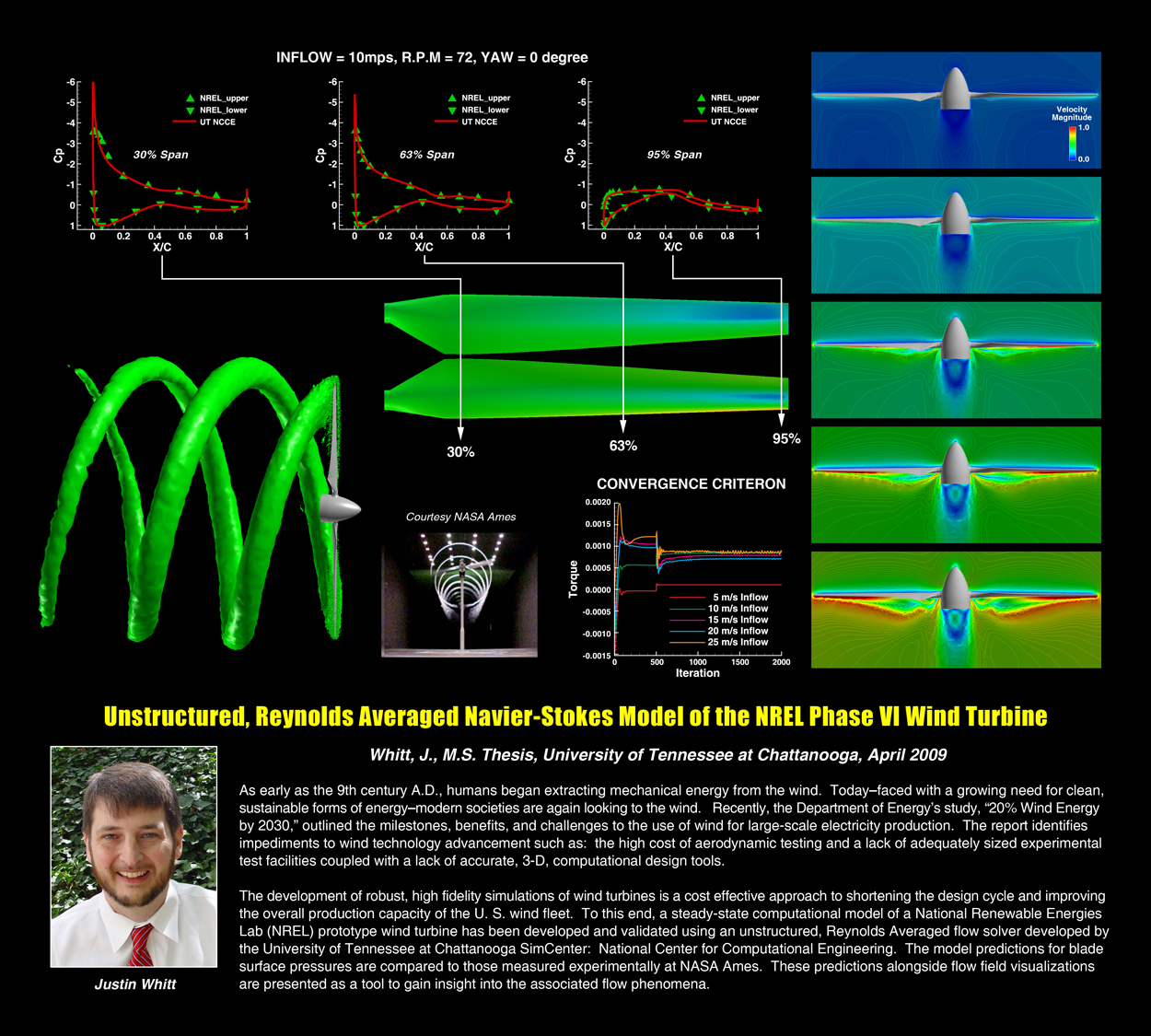Justin Whitt
Unstructured, Reynolds Averaged Navier-Stokes Model of the NREL Phase VI Wind Turbine
A Thesis Presented for the Master of Science in Computational Engineering Degree, University of Tennessee at Chattanooga
Justin Whitt, April 2009
Abstract:
As early as the 9th century A.D., humans began extracting mechanical energy from the wind. Today–faced with a growing need for clean, sustainable forms of energy–modern societies are again looking to the wind. Recently, the Department of Energy’s study, “20% Wind Energy by 2030,” outlined the milestones, benefits, and challenges to the use of wind for large-scale electricity production. The report identifies impediments to wind technology advancement such as: the high cost of aerodynamic testing and a lack of adequately sized experimental test facilities coupled with a lack of accurate, 3-D, computational design tools.
The development of robust, high fidelity simulations of wind turbines is a cost effective approach to shortening the design cycle and improving the overall production capacity of the U. S. wind fleet. To this end, a steady-state computational model of a National Renewable Energies Lab (NREL) prototype wind turbine has been developed and validated using an unstructured, Reynolds Averaged flow solver developed by the University of Tennessee at Chattanooga SimCenter: National Center for Computational Engineering. The model predictions for blade surface pressures are compared to those measured experimentally at NASA Ames. These predictions alongside flow field visualizations are presented as a tool to gain insight into the associated flow phenomena.
